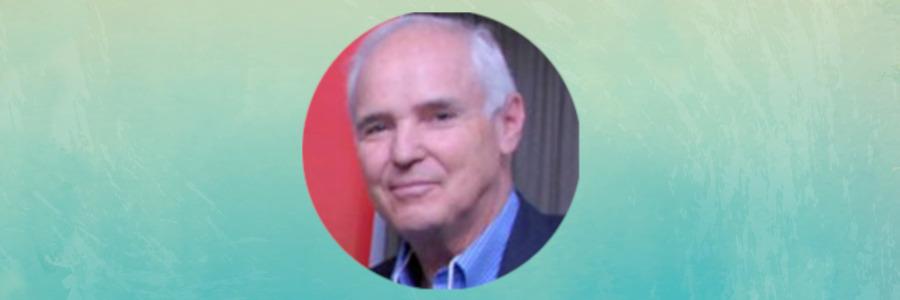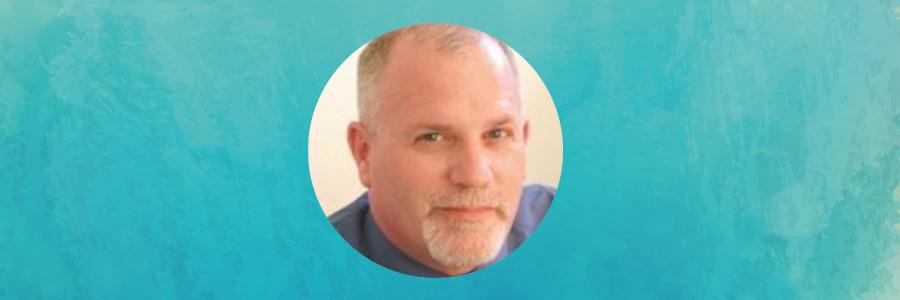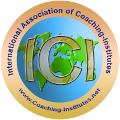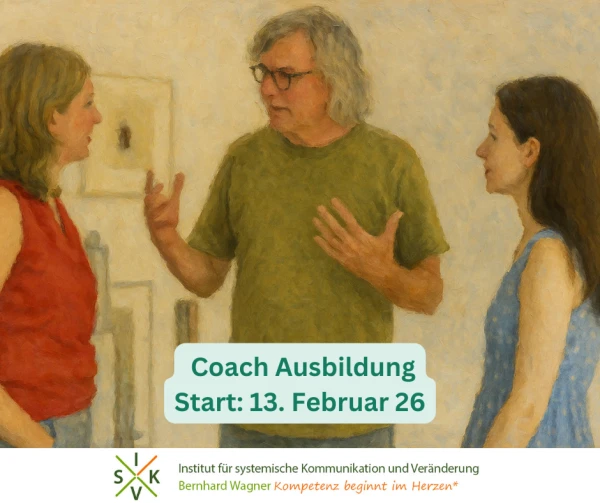A propos / Ressources / Articles
Nandana Nielsen: Coaching for everyone - from competitive sports to self-knowledge
A propos / Ressources / Articles

Coaching for everyone - from competitive sports to self-knowledge
Timothy Gallwey, John Whitmore and Thomas Leonard have contributed significantly to the fact that coaching has also established itself outside of sport, that coaching has become known and recognised. All three were fascinated by the possibilities of developing their awareness, shaping their lives on their own responsibility and leading their lives in a self-determined way.
For them, it was in human nature that a person can outgrow himself.

Timothy Gallwey, an educationalist, said goodbye in the early 1970s to an occupation in higher education that was associated with the prospect of a career. He was convinced that people possessed an innate capacity for self-determination and that this self-determination is least in demand in the work context, in other words, in working life people are least free.
Gallwey himself found it very difficult to act freely and self-determined in his work. Too many rules and restrictive habits did not allow him to escape daily routine. Now he wanted to find out how it is possible to express himself self-determined and freely in work.
He was already a good tennis player as a child and had experience as a tennis coach. To earn a living, he coached tennis players. Combined with his search for the possibility of self-determined action, he reflected on the routine of coaching tennis. He came to the conclusion that the coach encouraged the player's development by imparting his knowledge and pursuing the best intentions. The player himself tried to implement these impulses and execute them perfectly. He had the best intention to learn and become a top athlete. Gallwey concluded that in this coaching the player had no way of contributing his competence to the development of his skills. The player's conviction that only the coach had the competence to optimize his abilities also stood in the way of his own development.
Gallwey began to explore the missing part of this coaching concept. Starting from his realization that we all play two games, an outer game and an inner game, he began to explore the inner game by exploring the player's thoughts, feelings and images. Often negative sponsoring such as self-doubt, feelings of inferiority, fears, tension, orders were found here. These states had a not inconsiderable influence on the game. He described this process with the sentence: "The opponent in your own head is worse than the one on the other side of the net."
He emphasized how important it was for the player to open up to his state of mind in order to be free to recognize his weaknesses and strengths and to work with them. This makes it possible to release potential to maximize one's own performance. He saw the heart of coaching in the fact that the coachee opened up to his inner game:
"Get to know yourself and trust yourself."
By expanding the focus on action to include the perspective of thinking and feeling, he showed how strongly this "inner game" influences people in coping with challenging, difficult situations. T. Gallwey describes in his model how the experience of a situation is directly related to the reaction to that situation and how this experience encompasses far more than the superficial, conscious thoughts.
The self-influencing between perception and reaction is a result of the chosen interpretation. It is faster than anything else that happens. "Oh, this is going to be difficult now" would affect all further actions, for example. Gallwey explains this process with the "Self 1" and the "Self 2". "Self 1" is the negative critic who knows everything and mistrusts the "Self 2". "Self 1" represents learning processes of teachers of the outer world and tries to control the impulses of "Self 2". "Self 2" stands for all potentials inherent in a human being, both those already lived and those still undiscovered. It is the "self" that we lived enthusiastically as children. The "Self 2" also stands for the ability to learn and develop, Gallwey calls this learning "the natural learning state" and he describes when we leave this state: "Learning is incredibly easy when we are in our natural learning state. We leave this natural state of learning through commands, demands, judgements and criticism."
In 1974 Gallwey published his first book "The Inner Game of Tennis". His publisher had predicted that a book with such a clear context would reach only a limited edition. The book was a huge success! Millions of copies, translated into 17 languages and the most amazing thing was that all sorts of people bought this book, not just tennis players. This "inner game" took place in all areas of life and the potential of the book for self-knowledge, the possible overcoming of practiced self-sabotage and the prospect of mastering the inner game was quickly realized.
Gallwey's approach created a whole new space for action in coaching that can be seen as the root of coaching that should find its field of action outside of sport. His practice led to the autonomy of the coachee to discover an appropriate relationship between the outer game and the inner game. Getting to know oneself in the context of the specific task to be accomplished allows the coachee a free and self-determined shaping of the process. The coach's task is to strengthen the coachees introspection in a targeted manner, to be attentive to negative self-influencing, and to be able to and to replace them with non-judgmental observation, to trust in "Self 2" and to invite them again and again to their own shaping of the process. Coaching supports the coachee in learning something rather than teaching him something.
Gallwey summarizes in three words the essential characteristics of a coach's work in unfolding hidden potentials: Awareness/attentiveness, trust, choice. The principles of these 3 postures are:
- Consciousness: (in the sense of mindfulness) non-evaluative observation, it heals.
- Trust: the coach trusts in his own unconscious and in the unconscious of the coachee.
- Choice: To bid farewell to the belief in the truth of learned knowledge.

John Whitmore successful racing driver; offspring of one of England's oldest noble families and seeker of meaning. He gave up his racing career, continued his father's business after his death, which included several companies and a large farm. He was in his early 30s when he had everything materially connected with happiness, his own house, an airplane, an island in the Caribbean etc. He was a great man and a great man. But inwardly he was moved by questions such as whether possessions or more possessions contributed to his happiness. As a child he experienced in life with his parents that one finds fulfilment when one gives something to others. His parents were well-known public figures, also because of their activities in non-profit organizations. During the Second World War his parents were constantly busy supporting many people and the family often shared their home with people in need.
When the questions of fulfilment arose, his interest in psychology began. Carried by a desire to understand what was inside of him, he moved to California in the early 1970s, where many important psychological thinkers lived at the time, such as Carl Rogers and Abraham Maslow. He learned a lot and he got to know a lot of himself. He now knew a lot about psychology so he could have become a therapist. However, his interest lay in using knowledge from psychology for competitive sports. He studied sports psychology. During his search he got to know Timothy Gallwey and his "Inner Game". Then the circle closed for him, the connection of the outer play and inner play as support for the optimization of own potentials convinced him immediately and it came from the sport!
He was trained by Gallwey in the "Inner Game". He became an ally and friend of Gallwey and they worked together. In several interviews Whitmore tells that it was not easy to convince other coaches of the Inner Game, but the coachees were very enthusiastic.
Whitmore returned to England to set up a coaching company that coached sports according to the Inner Game model. Gallwey trained the first coaches in the beginning. In practice, coaching was offered for tennis, skiing and golf[1]. From these coaching’s first inquiries resulted for Coaching in enterprises whether it is not possible with this method also hot problems in other ranges to work on. Whitmore was convinced that the Inner Game could be used in all human areas. In the early 80's Whitmore started coaching companies. This made him the first to practice the "inner game" outside of sport in the corporate sector.
For Whitmore, Gallwey had touched the essence of coaching. The time was ripe. Gallwey's first book coincided with the spread of humanistic psychology, according to which man is born with the full potential to develop his abilities and needs food and encouragement to unfold that potential. For Gallwey and Whitmore, awareness and responsibility were the keys to unfolding this potential.
His coaching practice in companies led to his book "Coaching for Performance", published millions of times in early 1992 and translated into 17 languages. Inner Game and other coaching perspectives were introduced. The phase model GROW, developed in the book by Whitmore, found great recognition. GROW gives the coach a sequence in front of which he can follow in appropriate situations.
G = Goal: what do you want?
R = Reality: where are you now?
O = Options: what could you do?
W = Will: what will you do?
The book made Inner Game known outside of sport for coaching in Europe. At the beginning of the 90s coaching began to become interesting for companies and Whitmore's experience came at the right time. He was often invited to congresses to report on the models he presented and his practice. He was a great source of inspiration for countless coaches. For him, coaching in sport, work and life was comparable to the philosophy of Socrates, for whom the most important human insight is expressed in the motto of the Delphi oracle " Recognize Yourself ". In sport, coaching for him was predominantly training, optimizing performance as far as possible through the internalization of techniques, while coaching in work and everyday life should inspire the shaping of the future and lead to conscious, responsible action. He described this in an interview in 2009[2]:
"We must wake up, become mindful with all our senses if we want to change something. And that's what coaching is all about, consciousness. All wisdom teachers teach this consciousness as a conscious being, in all religions. Consciousness is very fundamental. Anyone who presents a coaching concept that lacks awareness (mindfulness, consciousness) and responsibility (self-responsibility, sustainability) has not understood what coaching is about. It is about existential human concerns. ... I feel a responsibility for the coaching movement and our product: authentic, fear-free, self-responsible people who are no longer victims of hierarchies and hierarchical thinking".

Thomas J. Leonard, financial planner, visionary and seeker of ways to live life in its fullness. His main inspiration on his way to becoming a coach was the Consciousness Training EST (Erhard Seminar Training), founded by Werner Erhard, which was offered in the USA and Europe from 1971 to 1983. EST had its roots in humanistic psychology. The trainings were essentially about transformation. Jonathan Moreno, American philosopher, historian and founder of psychodrama, described what Werner Erhard associated with transformation in the trainings:
"He called transformation the realization that he possessed control over what stood between him and his wholeness as a human being.”[3]
Werner Erhard described this transformation that every human being has and can access:
“What I have discovered is that people know things that they do not know that they know, the knowing of which can nurture them and satisfy them and allow to experience an expanded sense of aliveness in their lives. The training is an occasion for them to have that experience – to get in touch with what they actually already know but are not really aware of.” … “The training is about the experience of love, the ability to love and the ability to experience being loved, not the concept or story of it – and it is about the experience of happiness, and the ability to be happy and share happiness, not the concept, story or symbols of it. In short, the training is about who we are, not what we do, or what we have, or what we do not do or do not have. It is about the self as the self, not merely the story or symbols of self.”[4]
Thomas Leonard completed the EST training and worked there for some time. He was fascinated by the idea that every human being can find his own wholeness as a human being and he saw coaching as an option to accompany the way to this wholeness. For him the way was to get to know himself, to value himself and to accept life as it is. To fight neither life nor oneself, but, similar to the Asian martial arts, to move with the power of the opponent.
In the 90s, Thomas Leonard was a key figure in the popularization of personal and business coaching in the USA. It was his merit, which spread the admittingness of Coaching enormously, over his immense public work and by the establishment of the Coach University as well as by Coach organizations. Just to name a few:
- Founded, in 1992, Coach University, a leader in coach training with over 7,000 coaches operating in 38 countries.
- Founded, in 1994, the
- Started, in 1998, Teleclass.com, a virtual university with over 20,000 students, offering over 100 classes during any given week, delivered via conference call and RealAudio.
- Wrote 28 personal and professional development programs, including Personal Foundation, Certified Strategist, Toleration-Freee, Clean Sweep and SuperSensitive Person, A Perfect Life, Certified Critical Eye, which are used by coaches, training firms, and Fortune 100 companies.
- Authored 6 coach-related books since 1998:
- Was featured on over 100 hours of commercially available
- Developed a popular website called topten.org which contains over 1,000 Top 10 Lists on all subjects.
The book SIMPLY BRILLIANT contains 1800 success tips and lessons for the life of Coaches from the Coach University. Here it can be downloaded for free: http://www.zhyvoedelo.com/upload/iblock/ed2/simplybrilliant.pdf
Thomas Leonard's vision was that every person should be a coach in the sense that people support each other in their development and that the most talented of them should become professional coaches.
For him Professional Coaching is committed to ethical principles, does not focus unconditionally on the optimization of a coachee and is aware that the coachee is part of a society. There are many directions in professional coaching. Therefore, it is important for a coach to describe some directions in coaching as well as his or her own approach in order to identify himself or herself as a field expert.
Thomas Leonard died in 2003 at the age of 47. In his 15 years as a coach he was incredibly active in the areas of education, networking, publications and public relations.
Timothy Gallwey, John Whitmore and Thomas Leonard are the 3 great inspirers of our vision of coaching at the ICI. I would like to close with 3 quotations from them, in which their forward-looking attitude for coaching is expressed.
“There is something called inner prosperity and there is something called external prosperity. When we see the relation between the two involved, then we be truly rich. This is the next step of evolution.“ Timothy Gallwey
“Building awareness and responsibility is the essence of good coaching. Ask, don’t tell. Enthusiasts for growing awareness. Inspire to take responsibility.” John Whitmore
“The greatest discovery of my generation is that we are unique. The greatest discovery of the next generation, I pray, is that we are one.” Thomas Leonard
[1] The approach as a coach of mainly asking questions and not giving instructions is recorded in a video in which a classic golf coaching by a coach and an inner-game coaching by John Whitmore are conducted simultaneously. You can find it under this link https://vimeo.com/41343451
[2] Coaching-Magazin, Nr. 3/2009
[3] Impromptu Man: J.L. Moreno and the Origins of Psychodrama, Encounter Culture, and the Social Network,
[4] https://wernererhardandest.wordpress.com/tag/est/, 29.8.2018
[5] Quelle: coachville, Bio Thomas J. Leonard, updated 8/4/2003 mlt
URL: http://www.coachville.com/tl/thomasleonard/bio.html (12.08.2018)




